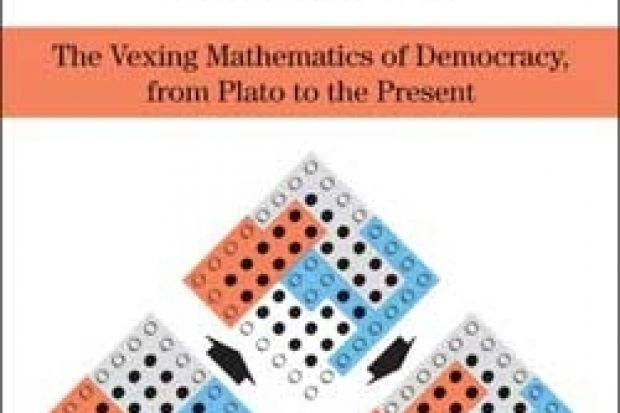Presumably today UK voters will elect whom they want - or will they? To explain my doubts, forget the general election; imagine selecting a party beverage where six people prefer milk to wine to ale, five prefer ale, wine, milk, and four prefer wine, ale, milk. The decision is clear; the first-past-the-post winner is milk followed by ale and wine.
But wait! By landslide proportions (9:6 or 60 per cent) these voters actually prefer ale to milk and wine to milk; they even prefer wine to ale (67 per cent). As these paired comparisons reverse the first-past-the-post ranking, wine now wins! For ale lovers, try a runoff; your beverage will triumph.
This example, where each candidate wins with an appropriate system, captures the reality that election outcomes can more accurately reflect the choice of a voting rule rather than the wishes of the voters. Its simplicity correctly warns that it is highly likely that you can expect this problem to arise with three or more alternatives or political parties. And beyond the doubts it casts about general elections, it should probably make you worry about your last departmental vote.
But given that in politics the "winner" influences events, there is a need for reform. (Had Al Gore, rather than George W. Bush, been elected US president in 2000, would we have had the Iraq war?) However, as George Szpiro emphasises in an engrossing history that describes how hidden mathematical complexities have hindered voting reform, answers are not easily found. This reality was echoed by a 2008 Ministry of Justice report that failed to recommend any voting system as the "best". Voting theorists also differ over the merits of various methods, but most agree that first-past-the-post must be replaced.
Although voting problems manifest subtle mathematical complexities, Szpiro is an excellent communicator of mathematical concepts with a nimble ability to sidestep technical jargon. Stated simply, if you followed my introductory example, you will be swept along by his story starting with Plato's distaste for democracy (prompted by the majority vote sentencing Socrates to death) that morphed into the "Athenian stranger's" description of a just society, complete with group decision rules. Szpiro uses history, spiced with gossip (eg, what was Charles Dodgson's true relationship with Alice Liddell?), to develop examples illustrating strengths and weaknesses of voting rules.
Only a few short years after recovering from the Mount Vesuvius disaster, for instance, Pliny the Younger presided over a trial judging whether a senator's slaves had killed him. This was not an either/or verdict; with suicidal intent, did the senator require his slaves to kill him? Szpiro carefully guides us through Pliny's reasoning over a ternary decision of guilt with execution, banishment or innocence - along with an account of the subsequent strategic voting. Some 1,700 years later, the French mathematician Jean-Charles de Borda rediscovered this count that assigns two, one and zero points to first, second and third choices. (The Borda beverage ranking is wine, ale, milk.) The Pliny story demonstrates how Szpiro uses history to introduce certain major results and players from this area.
Beyond the complications of voting, Szpiro describes how apportionments for list methods and US congressional seats to states based on the decennial census suffer other mathematical complexities - and how, when distinguished academics publicly argued their mathematical recommendations, not all behaved in distinguished ways. Szpiro's message is one of fascination: fascination with the mathematical difficulties hampering democracy, coupled with a sense of frustration that maybe everything is fated to go wrong.
Maybe. For support, Szpiro introduces Arrow's impossibility theorem (which played a role in Kenneth Arrow's 1972 Nobel prize) suggesting that with three or more alternatives, "no voting method is fair". A similar negative message is advanced about apportionment rules.
But I disagree with this negativity; indeed, the reader should try not to take seriously Szpiro's assessments about various voting rules. With minor exceptions, his story reflects what was known 20 years ago rather than today. For instance, rather than asserting the futility of creating fair voting systems, we now know how Arrow's seminal theorem more accurately asserts that this objective must fail for rules that emphasise paired comparisons of candidates separate from the whole. Doing so dismisses crucial information about voters' preferences; reinserting the lost information into the system leads to Borda's method.
Szpiro also adopts the unfortunate but standard approach whereby after uncovering a negative property for a method, it is continually used to discredit, rather than judge, the rule. This regrettable misuse of perfection becomes an enemy of progress. To underscore the reality that all rules have many strengths and weaknesses, I jokingly offer: "Tell me which voting system to trash and which one to promote; for a price, I will create properties that support your objectives." A more realistic goal (and one that is being pursued) is to determine which rules have positives that overwhelm any negatives.
With the above caveats and a warning that Szpiro often uses "majority" rather than "plurality", I recommend the book as an interesting, selective introduction into the complexities of voting reform.
Numbers Rule: The Vexing Mathematics of Democracy, from Plato to the Present
By George G. Szpiro
Princeton University Press
248pp, £18.95
ISBN 9780691139944
Published 18 May 2010
Register to continue
Why register?
- Registration is free and only takes a moment
- Once registered, you can read 3 articles a month
- Sign up for our newsletter
Subscribe
Or subscribe for unlimited access to:
- Unlimited access to news, views, insights & reviews
- Digital editions
- Digital access to THE’s university and college rankings analysis
Already registered or a current subscriber? Login
